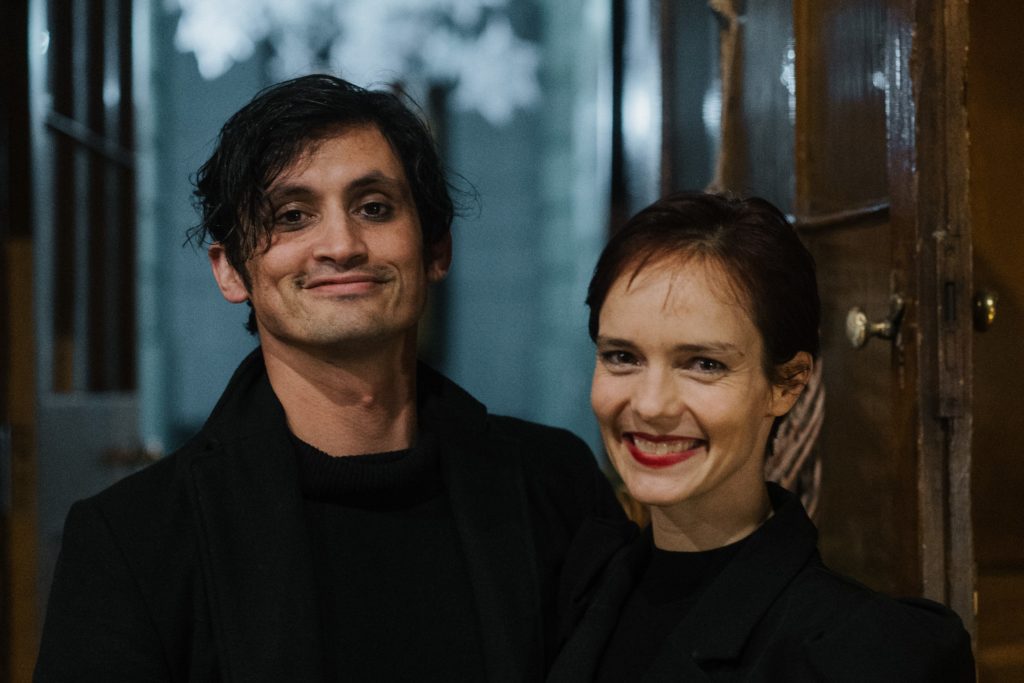 Davy & Kris McGuire created the mesmerising installation for this year’s Christmas experience, A Night at the Mansion. We delved behind the scenes on their creation…
Davy & Kris McGuire created the mesmerising installation for this year’s Christmas experience, A Night at the Mansion. We delved behind the scenes on their creation…
What are the details around the technology you are using? Is it something specific?
We are mostly using pretty standard projectors, the type you find in conference rooms or home cinemas. And what is thrown at the wall are literally just movies that have been edited and rendered specifically for the surface we are projecting onto. If you were to see those films on a screen you’d be surprised how weird and non-sensical they look. They only come to life in combination with the fabric of the building.
The films are looped on tiny, almost credit card sized computers called Raspberry Pi which you can find in children’s hands in computer science classes.
How do you create the projections?
We follow the same process that other film makers follow: You start with a vision and a story. Then a scriptwriter comes on board and writes all the dialogue, for Harewood we commissioned Christina Lewis. Then you cast your actors and you film them. In our case we mostly shoot them in front of green screens or with a very uncomfortable, weighted helmet/camera contraption on their heads (to film their eyes and mouths in a very particular way). Then you edit and comp that footage into what we call projection mapping kits. What we do differently from traditional film makers is the next step. We don’t finish here but we take those footage kits and splash them onto the wall where we map every pixel to the right spot on the chosen projection surface. This last process takes place in situ and it’s the reason why we stayed 3 weeks at Harewood prior to the opening.
How hard was it to line up the projections with the porcelain and the ceiling for example, it’s so precise, how is this possible?
As projection mapping artists you know the right tricks and softwares to help with pulling and pushing pixels into the right direction. It’s neither easy nor hard, it’s a technique you’ve got to learn. What is hard is making sure that the projections stay in place after you’ve mapped them, especially in buildings where you can’t drill into anything. When projectors heat up their focus can change and the projection can go wonky. If your projection surface (for example paper in different humidity conditions) has a life of its own the mapping can lose its precision. If audiences touch or kick projectors they can dislocate the mapping. So that part can be much more nerve wrecking and time consuming than lining up the projections initially.
What’s different/special about what you do from a tech perspective?
We think that we bring something special to projection mapping through our background in dance and theatre. We think in characters and stories whereas a lot of projection mapping artists think primarily in audiovisual effects.
The music was commissioned – can you tell us what the brief was and who you worked with?
We worked with a brilliant composer called Spesh Maloney (one visitor asked whether we had used Händel or Haydn for the porcelain figures!) and we briefed him by either describing what we need or sending him musical references. For A Night at the Mansion it was a mix of describing the atmosphere we wanted to create for each room, suggesting instruments, asking for a mood (a melancholy mood for the gallery figures for example), filming one of us ‘singing’ the idea we had in our head to our phone camera and sending the video to Spesh (don’t ask to see this please) and sometimes Spesh would just send a track as a suggestion from his side. Towards the end of the install Spesh joined us in the house and mastered each sound to fit the acoustics of the room. That’s when the portraits got a slight musical backing track for example – to disguise the musical noise bleed from the music in the room next door.
How long did the project take to create, aside from the installation?
We started with technical site visits at the end of July and then went more or less exclusively until the opening. So 4 months, whilst gently keeping other projects cooking on the side.
Find out more about Christmas at Harewood: A Night at the Mansion here
Follow us on social @HarewoodHouse